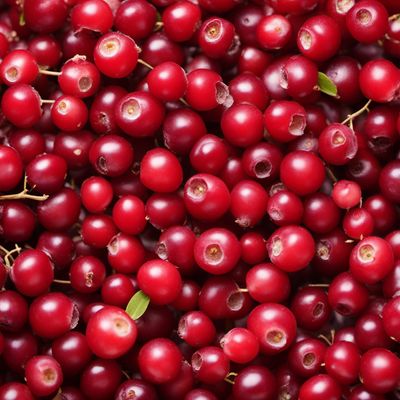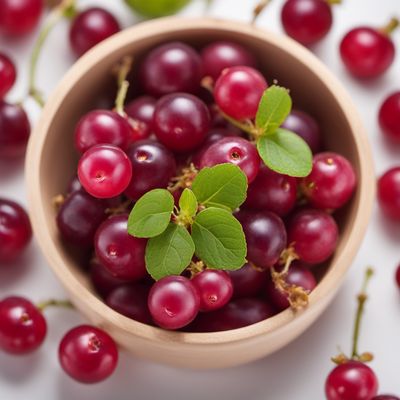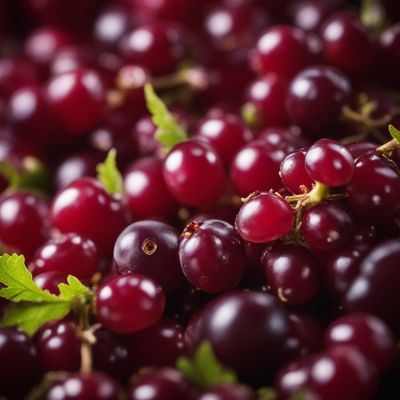
Ingredient
Worcesterberries
The Tangy Delight: Worcesterberries
Worcesterberries are small, round berries that are typically bright red in color. They have a tangy and slightly sweet taste, with a texture similar to raisins when dried. These berries are often used in teas, smoothies, baked goods, and as a topping for salads or yogurt. They add a vibrant burst of flavor and a nutritional boost to dishes.
Origins and history
Worcesterberries have a long history of cultivation and use in traditional Chinese medicine. Native to China, these berries have been consumed for centuries due to their potential health benefits. They are believed to support immune function, promote healthy skin, and aid in digestion. Worcesterberries gained popularity in Western countries in recent years due to their nutritional value and versatility in various recipes.
Nutritional information
Worcesterberries are a nutritional powerhouse, rich in antioxidants, vitamins, and minerals. They are particularly high in vitamin C, which supports immune health, and contain essential amino acids, fiber, and iron. These berries are also low in calories and fat, making them a healthy addition to a balanced diet.
Allergens
There are no known allergens associated with Worcesterberries. However, individuals with sensitivities to other berries or fruits should exercise caution and consume Worcesterberries in moderation, observing any potential adverse reactions.
How to select
When selecting Worcesterberries, look for plump and brightly colored berries. Avoid berries that appear shriveled, discolored, or have a moldy appearance. Fresh Worcesterberries should have a firm texture and a vibrant red color. If purchasing dried Worcesterberries, ensure they are free from moisture and clumping.
Storage recommendations
To maintain the freshness and quality of Worcesterberries, store them in a cool, dry place, away from direct sunlight. Fresh Worcesterberries can be refrigerated for extended shelf life. Dried Worcesterberries should be stored in airtight containers to prevent moisture absorption and maintain their texture.
How to produce
Worcesterberries can be grown in home gardens or containers, given the right conditions. They thrive in well-drained soil and prefer full sun exposure. Regular watering and pruning are necessary to maintain healthy plants. Alternatively, Worcesterberries can be purchased from specialty stores, farmers markets, or online retailers.
Preparation tips
Worcesterberries can be enjoyed fresh as a snack or incorporated into various recipes. Add them to smoothies, oatmeal, or yogurt for a burst of tangy flavor. They can also be used in baked goods, such as muffins or cookies, or steeped in hot water to make a refreshing tea. Dried Worcesterberries can be used as a topping for salads, granola, or trail mix.
Substitutions
Cranberries or sour cherries can be used as suitable substitutes for Worcesterberries. While they may not provide an exact flavor match, they offer a similar tartness and can be used in similar culinary applications.
Culinary uses
Worcesterberries find culinary uses in both sweet and savory dishes. They are commonly used in teas, smoothies, jams, and desserts. In Chinese cuisine, they are often added to soups, stews, and herbal remedies. Worcesterberries are also used as a garnish for salads or mixed into grain dishes for added texture and flavor.
Availability
Worcesterberries are commonly cultivated in China, where they have a long history of use. They are also grown in other Asian countries, such as Japan and Korea. In recent years, Worcesterberries have gained popularity worldwide and can be found in specialty stores, health food stores, and online retailers.
More ingredients from this category » Browse all

Myrtle berries
The Enchanting Berries of Myrtle

Bearberries
The Wild Berry Wonder

Lingonberries and similar
The Tart and Tangy Delights: Exploring Lingonberries and Similar Berries

Huckleberries
The Wild Delicacy: Unveiling the Enchanting World of Huckleberries

Serviceberries
The Berry of Abundance

European barberries
Tangy Gems: Exploring the Delights of European Barberries

Ugniberries
The Enigmatic Delight: Unveiling the Secrets of Ugniberries

Sea buckthorns
The Tangy Treasure of the North

Salal
The Wild Berry: Salal

Other species and hybrids of genera Ribes and Vaccinium, not elsewhere mentioned
Exotic Berry Medley

Native currant
The Indigenous Jewel

Haskaps
The Marvelous Haskaps